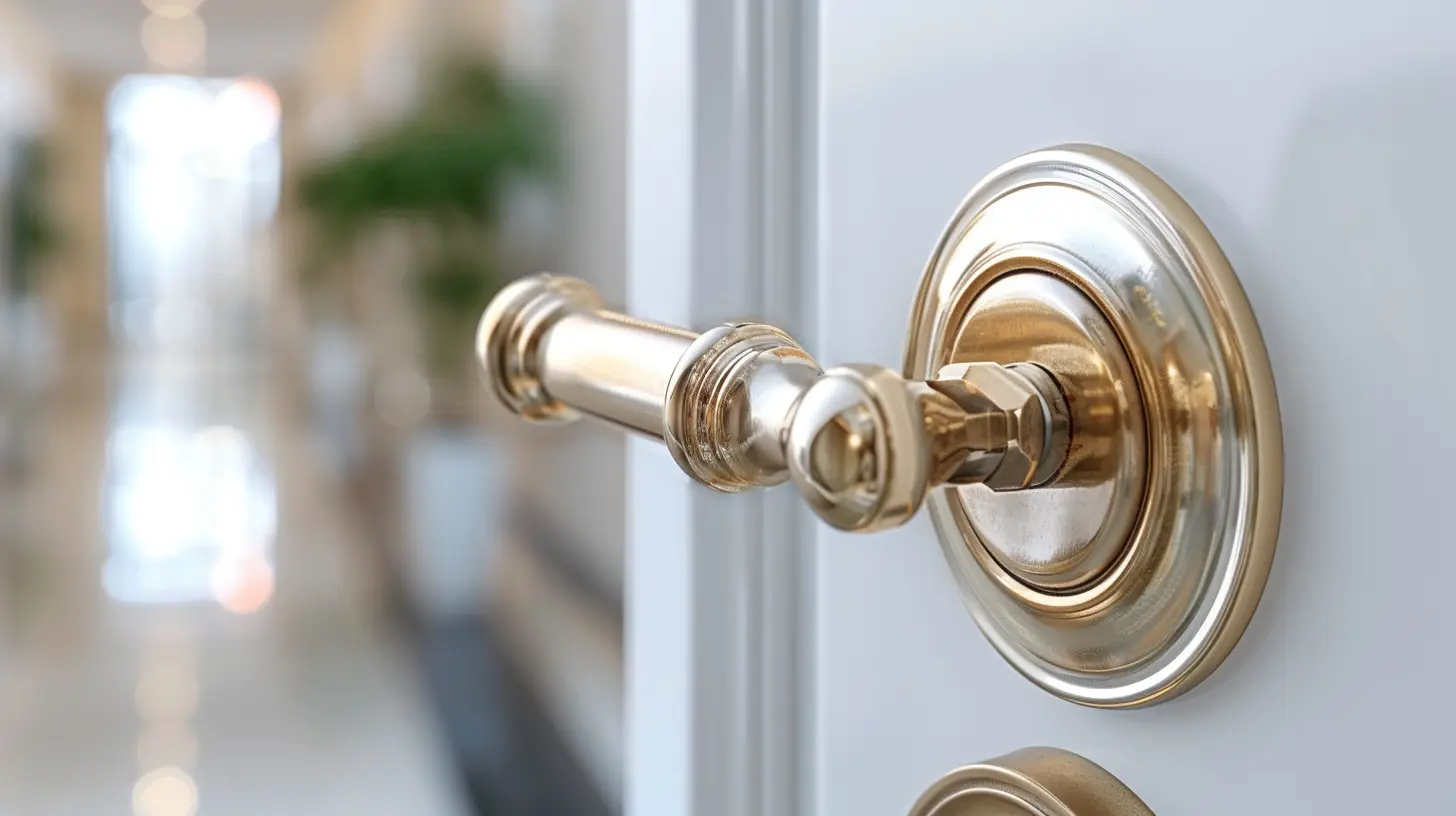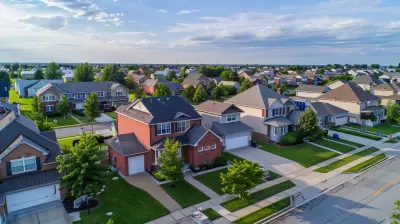Make Your Home Safer with These Simple Security Upgrades
1 November 2025
Home is where you should feel safest. But with break-ins on the rise, securing your home isn’t just an option—it’s a necessity. The good news? You don’t need a high-tech fortress to keep intruders out. A few smart security upgrades can make a world of difference.
In this guide, we’ll walk through simple yet effective ways to enhance your home's security without breaking the bank. Whether you're a homeowner or a renter, these practical tips will help you sleep a little easier at night. 
1. Secure Your Doors – Your First Line of Defense
Your front door is the most common entry point for burglars. If it’s weak, your home is vulnerable. Here’s how to reinforce it:Upgrade to a Solid-Core Door
Hollow doors are easy to kick in. Instead, go for a solid wood or metal door—it’s much tougher to break through.Install a Deadbolt Lock
A good deadbolt is a game-changer. Standard locks can be picked or bumped, but a high-quality deadbolt adds an extra layer of protection. Look for one with at least a one-inch throw bolt for maximum security.Reinforce Door Frames and Hinges
Even the best lock won’t help if your doorframe is weak. Reinforce it with a metal strike plate and use long screws (at least 3 inches) to secure hinges and locks. This small upgrade makes it much harder for burglars to kick the door open.Consider a Smart Lock
Forget hiding a spare key under the doormat. A smart lock allows keyless entry and remote access, meaning you can lock/unlock your door from your phone. Some models even have fingerprint access for added convenience.
2. Lock Down Your Windows – A Common Weak Spot
After doors, windows are the second-favorite entry point for burglars. Luckily, securing them is easy:Install Window Locks
Many stock window locks are flimsy. Reinforce them with aftermarket locks, pin locks, or key-operated locks to make them harder to pry open.Use Window Security Film
A burglar won’t think twice about smashing a window if it gets them inside faster. Security film adds an extra layer of strength, making it much harder for the glass to shatter.Add Window Sensors
A simple alarm sensor on your windows can alert you if someone tries to open them. Many smart home security systems integrate with these to notify you instantly when a window is tampered with.Plant Thorny Bushes Below Windows
This might sound old-school, but planting thorny bushes (like roses or holly) beneath ground-floor windows creates a natural deterrent. After all, no one wants to climb through a thorny mess.
3. Light Up Your Exterior – Don’t Give Criminals a Place to Hide
Burglars love the dark—it helps them stay unnoticed. Eliminating shadows around your home can make it a less attractive target.Install Motion-Activated Lights
Motion-activated lights startle intruders and make them think twice before approaching. Place them near entry points, walkways, and driveways.Use Smart Lighting
Smart lights allow you to control them remotely, schedule them to turn on at specific times, or even sync them with motion detectors. This makes it look like someone is always home, even when you’re not.Keep Your Landscaping Neat
Overgrown bushes and trees can provide cover for intruders. Trim landscaping around windows and doors to eliminate hiding spots.
4. Upgrade Home Security with Cameras & Alarms
A home without a security system is three times more likely to get burglarized. Fortunately, modern security systems are more affordable and easier to install than ever.Install Security Cameras
Visible security cameras work as both a deterrent and an evidence collector. Opt for:- Doorbell cameras to monitor visitors.
- Outdoor cameras to cover entry points.
- Indoor cameras for extra surveillance.
Choose cameras with motion detection, night vision, and real-time alerts for maximum effectiveness.
Invest in a Home Security System
A monitored home security system connects to a professional security company that alerts authorities if something suspicious happens. Even if you don’t opt for professional monitoring, DIY systems with alarms and sensors can still be highly effective.Use Fake Security Signs (But Don’t Rely Solely on Them)
A “Protected by XYZ Security” sign can deter casual burglars even if you don’t have an actual system. However, don’t use this as your only defense—back it up with real security measures.5. Secure Your Garage – An Easy Access Point
Many homeowners overlook the garage, but it’s one of the easiest ways for a thief to break in. Here’s how to lock it down:Cover Garage Windows
If burglars can see inside your garage, they know what’s worth stealing. Use frosted film or curtains to block the view.Secure the Emergency Release Cord
Most garages have an emergency release cord that burglars can manipulate to open the door from outside. A simple zip tie can prevent this trick.Use a Smart Garage Door Opener
A smart opener lets you check and control your garage door from your phone. No more second-guessing if you left it open!6. Don’t Forget About Cybersecurity
Home security isn’t just about physical protection—cybersecurity is just as important. Many modern security systems rely on Wi-Fi, making them vulnerable to hackers.Secure Your Wi-Fi Network
- Change default router settings and passwords.- Use strong, unique passwords for your smart home devices.
- Enable WPA3 encryption for added security.
Use Two-Factor Authentication
For smart locks, cameras, and security apps, set up two-factor authentication to prevent unauthorized access.Keep Software Updated
Hackers exploit vulnerabilities in outdated software. Regularly update your security devices to ensure they’re protected against cyber threats.7. Make It Look Like Someone’s Always Home
Burglars prefer empty houses. If they think someone’s inside, they’ll likely move on to an easier target.Set Up Automations
Use timers or smart plugs to turn lights, TVs, or radios on and off at different times. This creates the illusion of activity inside the home.Ask a Neighbor for Help When You’re Away
If you're going on vacation, have a neighbor collect your mail, park in your driveway, or check on the house periodically. Nothing signals an empty home like a piled-up mailbox.Final Thoughts: Small Changes Can Make a Big Difference
Securing your home doesn’t have to mean turning it into a fortress. Simple upgrades—like reinforcing doors, adding cameras, or improving lighting—can dramatically reduce the chances of a break-in.The key is to make your home a less appealing target. Burglars want quick and easy access; the harder you make it for them, the more likely they’ll move on.
So, take a few steps today to strengthen your home’s security. After all, peace of mind is priceless.
all images in this post were generated using AI tools
Category:
Home Improvement TipsAuthor:

Melanie Kirkland
Discussion
rate this article
1 comments
Merida Schultz
In shadows where our dreams reside, Safety's whisper, our true guide. With simple steps, let peace unfold, A fortress built, both strong and bold. Secure your haven, let love thrive, In safety's arms, we truly thrive.
November 7, 2025 at 4:04 AM

Melanie Kirkland
Thank you for beautifully capturing the essence of home safety! Your words perfectly highlight the importance of creating a secure haven for our dreams to flourish.


